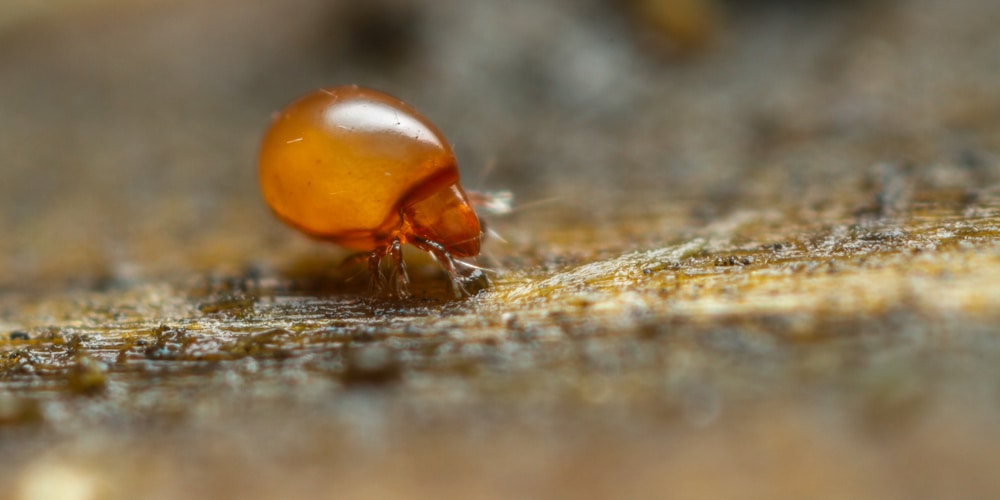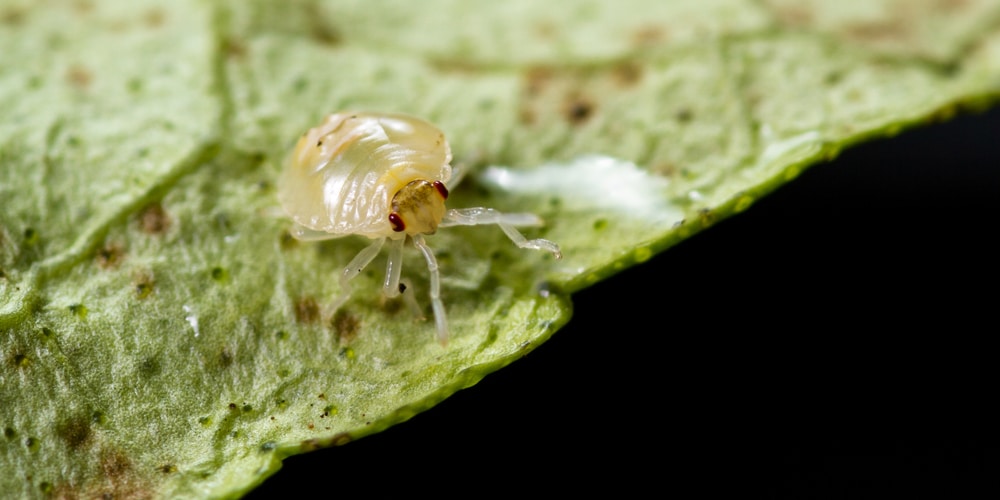If your soil has tiny white bugs crawling about in your flower borders or lawn, it’s likely your yard has problems with either soil mites or soil spiders. Gardening is a fun and interesting hobby which can bring many rewards. Whether you grow vegetables to feed your family or have created a nice yard and flower beds, you’ll need to stay vigilant to ensure your soil isn’t affected by an insect infestation. If you’ve recently spotted tiny white bugs in your soil, read on. This article will tell you how to deal with an infestation and how to prevent the insects from reappearing in the future.
Tiny White Bugs in the Soil
If you have tiny white bugs in the soil, it’s most likely to be an infestation of soil mites. These small bugs can be hard to spot as they are so tiny. There are a few different varieties of soil mites, and they are all harmless to people and animals. Some people even say that they are beneficial to the soil as they help to aerate it and break down and move organic matter around. They also supply your grass and plants with nutrients.
Oribatid Mites
Oribatid mites are the most common kind of soil mites, and these are harmless. They are generally found in woodland areas but may appear if you have decaying wood, leaves, or compost in your yard. Soil mites do seem to take over your yard in large numbers and will appear when there is a good food source for them, such as a compost heap, rotting wood, or newly laid topsoil. Soil mites and their eggs are often transported in compost or potting soil.
The best way to get rid of oribatid mites is to get rid of their food supply, which will stop them from multiplying. Clear away any decaying organic matter, such as rotting wood or compost from your yard.
Spider Mites
While soil mites are considered beneficial and aren’t too much of an issue unless you have an infestation, spider mites are very different. Soil mites can be tolerated as they will only eat decaying wood and plant matter, whereas spider mites can kill your grass and plants. Spider mites feed off live plants as they are sap-drinkers.
Soil mites live in the soil and don’t cause too many issues. If you have spider mites, they will attach themselves to the leaves and stems of plants and kill the plant.
If you think you have spider mites in your yard, you can wipe the leaves off your plants using a white tissue. When there are red or brown streaks on the tissue, this would indicate spider mites are present. Spider mites will also leave behind a webbing on the leaves of plants. If you have a them in the house, spider mites can live without plants for a week.
Plants that are affected by spider mites will quickly wither and die. You can treat a spider mite infestation using a general-purpose insecticide to kill the adult mites and the eggs.
Are Soil Mites Harmful?
Soil mites aren’t considered garden pests as they don’t bite humans, animals, or plants. They are a beneficial insect that feeds on decayed organic matter and won’t kill your grass or plants.
The problem with soil mites is that they can reproduce very quickly. Some people don’t like soil mites, especially if they are infesting a houseplant or if they seem to be congregated in a specific area of the yard.
How to get rid of Tiny White Bugs in the Soil
It’s worth noting that your yard is an ecosystem that needs beneficial insects to help keep it in good health. You may decide that you don’t need to get rid of tiny white bugs in the soil if they aren’t doing your plants any harm. Before you try to remove the insects, it’s worth finding out what type of pest they are.
Most likely, the tiny white bugs in the soil will be Oribatid mites which don’t need to be removed unless they are in a house plant or there is a lot in one area. Keeping your soil balance will help prevent infestations and control soil mite numbers.
Here are some tips that will help you control the number of soil mites and other invasive species in your yard.
1. Care for your lawn correctly
Keeping your lawn well aerated and mown regularly will prevent moisture and decaying organic matter, including thatch, from building upon the surface of the lawn.
When thatch builds up and starts to rot, it creates the perfect living and breeding conditions for soil mites and other insects. It also provides soil mites with a food source. If you don’t allow decaying plant matter to build up, your yard will be less appealing for soil mites.
2. Clear up your yard
It’s also a wise idea to clear away any old organic matter such as heaps of grass cuttings and decaying wood from your yard. Decaying organic matter is the primary food source for soil mites, so clearing away branches, leaves and clippings will help eliminate soil mites and prevent them from reappearing in the future. It’s also a good idea to remove fallen leaves from your gutters as well.
3. Put cuttings and yard waste in a compost bin
If you create your own compost, you’re more likely to attract soil mites to your yard. You may like to invest in a closed compost bin as this will help reduce infestation and will stop the soil mites from invading your entire yard.
4. Don’t overwater
Overwatering your grass and plants can make your yard waterlogged, which will kill plants and make grasses rot. Too much water can also increase the amount of decaying plant matter in your yard. This will create the ideal environment for a soil mite infestation.
It’s best to only water the top layer of your soil when it’s dry. You should only water warm-season grass every one to three weeks and cool-season grasses every three to five days. Watering too frequently will waterlog your yard and cause an infestation of soil mites. You can also improve your yard’s drainage by regularly aerating your lawn.
5. Use insecticide as a last resort
You may like to use an all-purpose insecticide to kill the soil mites. However, this isn’t usually necessary and can be very harmful to the environment.
Related: Mealworms in Compost, Good or Bad?
Conclusion
Tiny white bugs in the soil are most likely to be soil mites that are harmless and will actually benefit your plants and soil. If you want to get rid of soil mites, its best to aim to make your yard an inhospitable environment for the soil mites to survive. Remove their food source and don’t overwater your yard. These tips should sufficiently reduce soil mite numbers.
If, on the other hand, you have a spider mite infestation, you’ll need to use a general-purpose herbicide to get rid of them. Spider mites live on plant leaves and stems rather than in the soil and will kill the plants.


